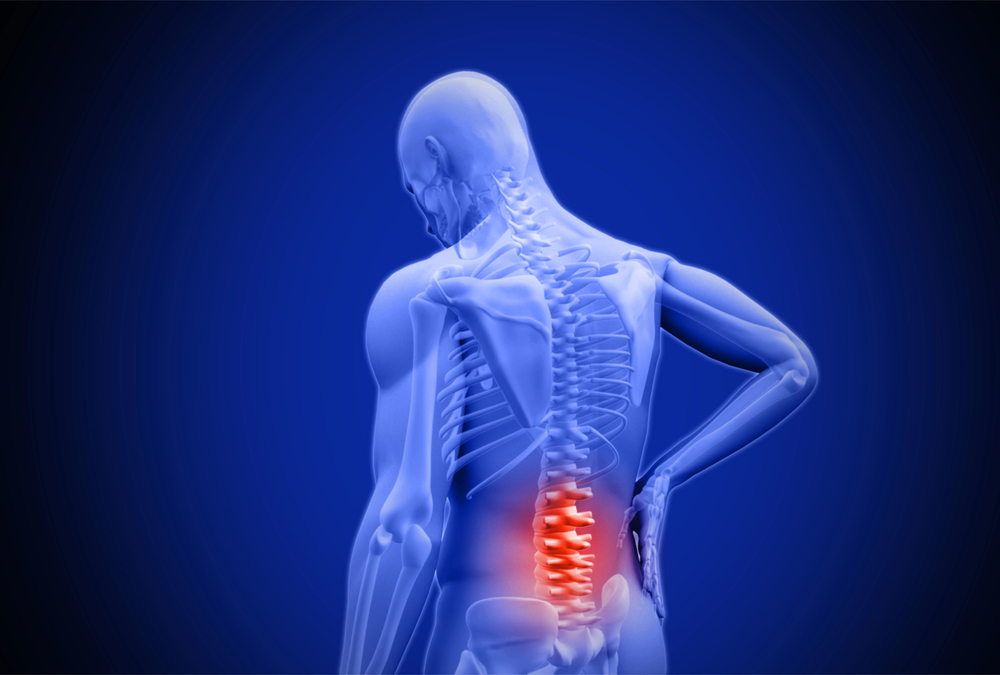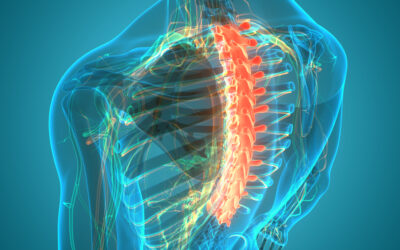
Lower back pain is an exceedingly common affliction that affects up to 80% of adults at some point in their lives. Understanding the underlying causes of lower back pain is key to finding the appropriate treatment and relief.
Anatomy of the Lower Back
The lower back, medically known as the lumbar spine, is a complex structure responsible for supporting the weight of the upper body while still allowing flexible movement. It begins right below the ribcage and is made up of vertebrae, discs, joints, nerves, muscles, tendons and ligaments that all work together to give the back both mobility and stability.
Vertebrae and Discs
The lumbar spine contains five large vertebrae stacked on top of each other with rubbery pads called intervertebral discs sandwiched in between each vertebra. These discs, made of an outer fibrous layer and an inner gel-filled center, act as shock absorbers that allow the vertebrae to move and shift while bearing the compressive weight and forces from the upper body. The five vertebrae along with the discs in between each one give the lower spine its flexibility to bend and twist.
Facet Joints
On the back of every vertebra are two bony protrusions called facet joints. These connect each lumbar vertebra to the one above and below it. The facet joints are similar to hinges that guide forward and backward bending as well as prevent excessive twisting motions. They allow smooth movement between each spinal segment. Inflammation, strain or injury to these small joints can cause localized low back pain.
Nerves and Muscles
The lower spine houses the beginnings of large nerve roots that exit through spaces between the vertebrae and eventually run down the legs. It also holds the nerve supply controlling the bowel, bladder and reproductive organs. Irritation, inflammation or compression of these nerve roots can result in symptoms like sciatica, numbness or tingling down the legs, and loss of bowel or bladder control. Muscles, tendons and ligaments surround the lumbar vertebrae, giving them support and preventing excessive movement. Damage to any of these soft tissues can lead to muscle spasms and localized back pain.
Common Causes
There are a number of potential causes of lower back pain, from strained muscles to serious medical conditions. Understanding the origin can guide appropriate treatment.
Muscle and Ligament Strain
The most frequent cause of acute lower back pain is sprain or strain of the muscular and connective tissues surrounding the lumbar spine. Activities involving forceful twisting motions, heavy lifting, or overextension can damage these structures. The pain tends to be sharp and worse with certain movements.
Disc Problems
As people age, the intervertebral discs lose hydration and elasticity, making them more prone to injury. A disc can bulge, rupture, protrude, or herniate, causing pain, numbness, or weakness if it presses on a nerve. This pain often radiates down the leg in a sciatic distribution.
Spinal Stenosis
Spinal stenosis describes abnormal narrowing of the spinal canal putting pressure on the spinal cord and nerve roots. This compression causes neurogenic claudication – pain, numbness, or weakness in the back and legs after walking short distances.
Arthritis
Spinal arthritis develops when facet joint cartilage deteriorates. The resulting bone-on-bone friction causes stiffness, localized tenderness, and inflammation. Osteoarthritis and ankylosing spondylitis are common forms of spinal arthritis.
Less Common Causes
While most low back pain results from musculoskeletal causes, serious medical conditions can also generate lumbar pain signals. Identifying these rare but dangerous underlying sources is imperative.
Infection
An epidural abscess or discitis (infection inside a disc) triggers inflammation putting pressure on nerve roots. Patients usually have a fever and elevated white blood cell count in addition to severe, constant back pain. Prompt antibiotic treatment prevents permanent neurological damage.
Spinal Tumors
In rare cases, metastatic cancer or a primary spinal tumor erupts inside the spinal canal placing pressure on the spinal cord and nerves. Some warning signs include unintentional weight loss and back pain worse at night.
Cauda Equina Syndrome
This emergency condition marked by sudden loss of bowel/bladder control calls for immediate surgery to halt permanent damage to the sacral nerve roots that control these functions. Other red flags include widespread neurological deficits in the legs.
Fractures
Traumatic injury from falls or accidents can fracture lumbar vertebrae. Compression fractures also result from osteoporosis or advanced disc degeneration. These breaks cause severe localized back pain exacerbated by movement.
Skeletal Irregularities
Congenital spinal irregularities like scoliosis (abnormal curvature) or spondylolisthesis (vertebral slippage) contribute to uneven weight distribution, muscular strain, joint arthritis, and neural compression – all sources of chronic back pain.
Risk Factors
A number of lifestyle factors raise susceptibility to lower back injury and pain episodes:
- Age: Discs lose flexibility with age. Over 60% of seniors have spinal osteoarthritis.
- Fitness Level: Lumbar tissues are vulnerable in those who do not exercise regularly and have poor abdominal strength.
- Excess Weight: Additional pounds strain the facet joints and compress the lumbar discs. Obese individuals have 2.5x higher low back pain incidence.
- Occupation: Jobs involving heavy labor, lifting, bending, or sitting for prolonged periods can increase the risk of injury.
- Improper Lifting: Using back muscles rather than leg muscles predisposes injury.
- Genetics: Some spines degenerate faster based on hereditary factors. Short pedicles also increase risk.
Symptoms
Familiarizing oneself with typical lower back pain symptoms assists in determining when professional help is warranted.
Localized Pain
Most back pain is due to damaged soft tissues or arthritic joints. This mechanical pain tends to be sharp or dull, intermittent or constant, and worsens with certain positions or activities. Rest usually helps relieve strained muscles.
Radiating Pain
When a spinal nerve gets compressed, usually by a bulging disc, pain travels along the nerve’s path into the leg and at times into the foot. This radicular pain, called sciatica, produces electric, shooting sensations and numbness alongside the dull back ache.
Stiffness and Spasms
Guarding damaged structures leads to lumbar muscle tightness and spasms. These involuntary contractions manifest as hardness in the back muscles. Gentle activity provides relief, but spasms indicate underlying injury requiring care.
Red Flags
While most back pain results from benign causes, any of the following red flag symptoms warrant prompt medical evaluation:
- Loss of bowel or bladder control
- Fever, chills, or unintentional weight loss
- Leg weakness making standing difficult
- Pain unrelated to movement that disrupts sleep
- History of cancer with new back pain
Diagnostic Journey
Assessing lower back pain involves gathering key pieces of information to reach a correct diagnosis:
Medical History
Questions about location of pain, duration, severity, relieving/aggravating factors, and associated symptoms help distinguish muscular strain from disc, joint, or nerve issues.
Physical Examination
Looking for areas of tenderness, testing strength and reflexes in the legs, assessing walking ability, and checking for any neurological deficits prevents overlooking rare but serious causes.
Imaging Studies
X-rays, CT scans, and MRIs provide pictures of the lumbar anatomy. These help identify skeletal problems, measure spinal canal narrowing, or show disc bulges/herniations. Imaging rarely offers benefit for simple strains.
Additional Testing
Electromyography assesses nerve conduction to the legs. Bone scans discover fractures or infections. Discography investigates disc pathology by injecting discs to recreate pain. These help finalize complex diagnoses.
Treatment Approaches
Alleviating lower back pain involves calmly experimenting with an array of nonsurgical remedies before considering risky interventions with variable success rates.
Self-Care
Gentle self-care often successfully comforts strained tissue without medical intervention. Strategies include:
- Ice/heat therapy to reduce inflammation
- OTC anti-inflammatories like ibuprofen to ease swelling
- Pain medicines such as acetaminophen or lidocaine patches
- Gentle walking and light stretching to improve muscle relaxation
- Yoga poses to enhance core strength and spinal flexibility
- Ergonomic furniture adjustments to improve sitting and standing posture
Medical Management
If self-care falls short, physicians can provide further pain relief with:
- Muscle relaxants like cyclobenzaprine to release spasms
- Prescription anti-inflammatory medication for more potent effects
- Steroid injections directly into inflamed structures
- Pain psychology services to develop coping techniques
- Surgery only if conservative options fail and clear anatomical pathology exists
Physical Therapy
Working with a physical therapist often successfully treat lower back injuries using specific exercise programs that:
- Strengthen core and gluteal muscles to better support the spine
- Improve flexibility allowing fuller range of motion
- Correct postural issues like swayback to prevent further strain
- Enable safe return to normal functional movements after injury
Alternative Therapies
For some patients, alternative treatments offer symptom relief with fewer risks than pain medication or surgery:
- Spinal manipulation by chiropractors or osteopaths
- Massage to loosen tense back muscles
- Acupuncture to activate natural pain relief mechanisms
Preventing Recurrence
Implementing a multidimensional self-care plan reduces odds of repeat back problems. Key elements include:
- Exercise to build muscle strength and flexibility
- Posture correction during sitting, standing, and lifting
- Diet and weight control to limit poundage stressing the spine
- Proper lifting mechanics using leg power, not back muscles
- Stress management since psychological factors affect perceived pain severity
- Work ergonomics to ensure equipment fits the worker’s body properly
Conclusion
While periodic backaches from muscle strains or osteoarthritis may be unavoidable, understanding fundamental pain triggers makes activity modification and self-treatment logical first steps. Recognizing red flags indicating serious disease also prevents overlooking rare but dangerous conditions. In most cases, lower back pain resolves within several weeks using conservative modalities. Implementing sustainable lifestyle changes then lowers risk of recurrence down the road. Staying optimistic through temporary setbacks poses the surest path to recovery.
Written by Dr. Tony Mork
Orthopedic Spine Surgeon
I’m Dr. Tony Mork, MD, a Minimally Invasive Orthopedic Spine Surgery Specialist in Newport Beach, California. With over 40 years of experience, I’m dedicated to providing information for all topics that involve neck and back pain.
February 14, 2024
Contact a Spine Specialist Near You!
Related Articles
Degenerative Disc Disease | Causes and Risk Factors
Degenerative disc disease describes age-related wear and tear to the rubbery spinal discs cushioning the vertebrae that can lead to chronic back or neck pain. While partly genetic, there are also lifestyle factors and injuries that accelerate disc degeneration over...
Upper (Thoracic) Back Pain | What is Causing My Pain?
Upper back pain is a surprisingly common affliction, affecting up to one-quarter of the adult population at some point. While not as prevalent as lower back pain, discomfort in the thoracic region still accounts for a substantial slice of musculoskeletal complaints...
Upper (Thoracic) Back Pain | Understanding Why it Hurts
Upper back pain refers to any type of discomfort or pain in the thoracic spine region. This article will provide an in-depth overview of upper back pain, including its causes, symptoms, diagnosis, and treatment options. We aim to help readers understand the anatomy of...



